Evaluating Different Approaches to Comparing Structural Drying Methods
Water damage can strike at any moment, wreaking havoc on homes and businesses alike. From burst pipes to natural disasters, the aftermath of water intrusion can be devastating. That’s where structural drying steps in as the unsung hero of restoration and damage mitigation. In this blog post, we delve into the world of structural drying, an essential process that often goes unnoticed until disaster strikes. Understanding its importance is paramount, as it can mean the difference between costly repairs and a swift recovery.
Structural drying is the process of removing moisture from building materials, preventing mold growth, and preserving the integrity of structures. Whether it’s a flooded basement or water-damaged drywall, knowing the ins and outs of structural drying methods and techniques can save you time, money, and stress in the event of water damage. In the following sections, we’ll explore various methods of structural drying, their pros and cons, and when to use them. So, let’s roll up our sleeves and dive into the world of structural drying to better equip ourselves for whatever water damage may come our way.
Background or Context
Water damage is a pervasive and often unpredictable issue that can strike homes, businesses, and structures of all types. From the slow, hidden leaks that gradually compromise the structural integrity of a building to the sudden deluge of a burst pipe or a natural disaster’s fury, water intrusion poses a significant threat. To effectively combat this threat, it’s crucial to grasp the fundamental concepts of structural drying and its broader context.
Structural drying is not merely a cosmetic process; it’s a critical component of damage mitigation and restoration. When water infiltrates a building, it saturates various materials, including drywall, wood, insulation, and even concrete. Left unaddressed, this moisture can lead to a host of problems, ranging from rot and decay to mold growth, compromising not only the aesthetics but also the safety of the structure.
Understanding the broader context of water damage and structural drying involves recognizing the multifaceted challenges it presents. For instance, the severity of water damage can vary widely, from minor incidents that affect localized areas to catastrophic events that impact entire structures. The materials used in construction, the speed of response, and environmental factors all play a role in determining the success of structural drying efforts.
Moreover, the consequences of inadequate structural drying can be long-lasting and costly. Mold infestations can pose health risks and require extensive remediation efforts, while structural integrity issues can necessitate expensive repairs.
In this context, structural drying emerges as a proactive and strategic approach to mitigating water damage. By promptly and effectively removing moisture from affected materials, it not only prevents further damage but also reduces the risk of mold growth, safeguarding the health of occupants and the structural integrity of the building.
In the following sections of this blog post, we will delve into the specifics of various structural drying methods, their applications, and their role in ensuring a swift and comprehensive response to water damage situations.
Common Structural Drying Methods
Structural drying is a multifaceted process that involves the removal of moisture from building materials, but the methods employed can vary widely. The choice of method depends on several factors, including the extent of water damage, the type of materials affected, and environmental conditions. In this section, we’ll explore some of the most common structural drying methods used in the industry.
a. Dehumidification: Dehumidification is a cornerstone of structural drying. It involves the use of industrial-grade dehumidifiers to extract excess moisture from the air within a space. These machines work by drawing in humid air, cooling it to condense the moisture, and then expelling dry air back into the environment. Dehumidification is highly effective in controlling humidity levels, which is essential for preventing further damage and mold growth. It’s particularly useful in enclosed spaces where ventilation is limited.
b. Air Movers: Air movers, also known as fans or blowers, are vital tools in the structural drying arsenal. They accelerate the evaporation of moisture from wet materials by creating airflow across surfaces. This increased airflow promotes the transfer of moisture from saturated materials into the air, making it easier for dehumidifiers to remove. Air movers come in various sizes and types, making them adaptable to different drying scenarios.
c. Heat Drying: Heat drying is a method that utilizes heat to expedite the drying process. Specialized equipment, such as heaters or heat exchangers, is employed to raise the temperature within the affected area. Higher temperatures increase the rate of evaporation, allowing materials to release moisture more quickly. Heat drying is particularly effective in colder environments or when drying materials with a high moisture content.
d. Injection Drying: Injection drying is a technique used to dry hard-to-reach areas, such as wall cavities or enclosed spaces within structures. It involves injecting dry, warm air into these spaces to facilitate drying. This method is useful when standard drying methods may not reach all affected areas effectively.
e. Freeze Drying (if applicable): In some specialized cases, freeze-drying may be employed to salvage water-damaged documents, books, or other sensitive materials. Freeze drying involves freezing the materials and then using a vacuum to remove the ice as a gas, effectively bypassing the liquid state and preserving the integrity of the items.
Each of these structural drying methods has its unique strengths and limitations. The choice of method or combination of methods depends on the specific circumstances of the water damage situation. In the following sections, we will delve deeper into each method, exploring their advantages, considerations, and best practices for their application in different scenarios.
Dehumidification:
Dehumidification is a cornerstone of structural drying. Dehumidifiers work by drawing in humid air, cooling it to condense the moisture, and then expelling dry air back into the environment. This process significantly reduces humidity levels, preventing further moisture absorption by building materials and promoting the evaporation of trapped water. It’s particularly effective in enclosed spaces with limited ventilation. Dehumidifiers come in various sizes and capacities, allowing professionals to select the most appropriate equipment based on the scale of the water damage.
Pros of Dehumidification:
- Precisely controls humidity levels.
- Effective in enclosed spaces.
- Suitable for various materials.
- Prevents mold growth.
Cons of Dehumidification:
- May require more time for large-scale drying.
- Energy consumption can be relatively high.
Air Movers:
Air movers, often referred to as fans or blowers, play a pivotal role in structural drying. These machines create a continuous flow of air over wet surfaces, promoting the evaporation of moisture from materials. The increased airflow enhances the transfer of moisture from saturated materials into the air, making it easier for dehumidifiers to extract. Air movers come in different types, including axial and centrifugal fans, with varying sizes and power levels to suit different drying scenarios.
Pros of Air Movers:
- Accelerate the drying process.
- Versatile and adaptable to various situations.
- Effective for surface drying.
Cons of Air Movers:
- May not reach deeply embedded moisture.
- Can be noisy and require regular repositioning.
Heat Drying:
Heat drying employs elevated temperatures to expedite the drying process. By increasing the ambient temperature in the affected area, heat drying enhances the rate of evaporation, allowing materials to release moisture more rapidly. This method is particularly valuable in colder environments or when dealing with materials with high moisture content. Professional-grade heaters or heat exchangers are used to maintain the desired temperature levels.
Pros of Heat Drying:
- Accelerates drying, especially in cold conditions.
- Effective for moisture-laden materials.
- Helps prevent mold growth.
Cons of Heat Drying:
- Requires specialized equipment.
- Energy-intensive.
Injection Drying:
Injection drying is a specialized technique used to dry hard-to-reach areas within a structure, such as wall cavities. It involves injecting dry, warm air into these enclosed spaces, facilitating drying. This method is particularly useful when standard drying methods may not adequately reach all affected areas. It requires specialized equipment and expertise to ensure proper airflow and effective moisture removal.
Pros of Injection Drying:
- Targets inaccessible areas.
- Effective for drying confined spaces.
- Minimizes demolition and disruption.
Cons of Injection Drying:
- Requires specialized equipment and training.
- Limited to specific scenarios.
Freeze Drying (if applicable):
In some cases, freeze-drying may be employed to salvage water-damaged documents, books, or sensitive materials. Freeze drying involves freezing the materials and then using a vacuum to remove the ice as a gas, effectively bypassing the liquid state. This method is invaluable for preserving the integrity of items that could be damaged by traditional drying methods.
Pros of Freeze Drying:
- Preserves sensitive materials.
- Prevents further damage to documents or artifacts.
Cons of Freeze Drying:
- Specialized equipment is required.
- Limited to specific applications.
In conclusion, the choice of structural drying method or combination of methods depends on several factors, including the extent of water damage, the materials affected, and environmental conditions. Professionals in the field carefully assess these factors to determine the most effective approach. In the next section, we will delve into the considerations and best practices for selecting the appropriate method in various water damage scenarios. We’ll also explore the factors that influence the method selection process and offer practical advice for making informed decisions when faced with water damage restoration efforts.

